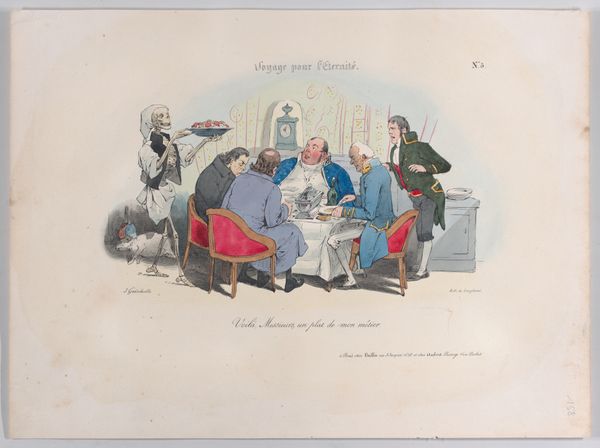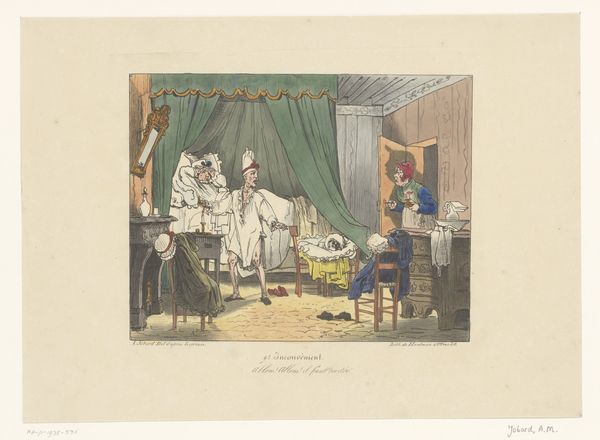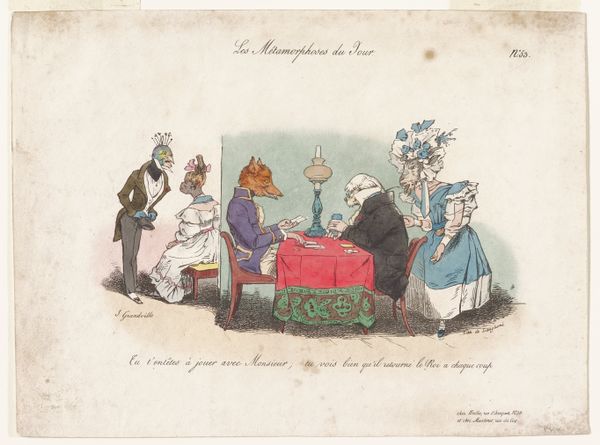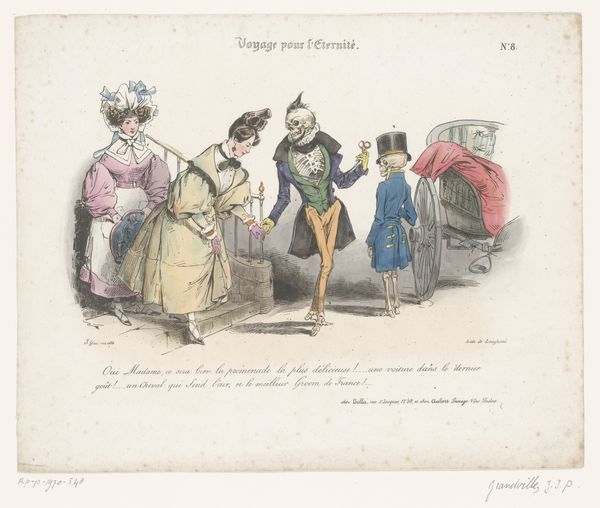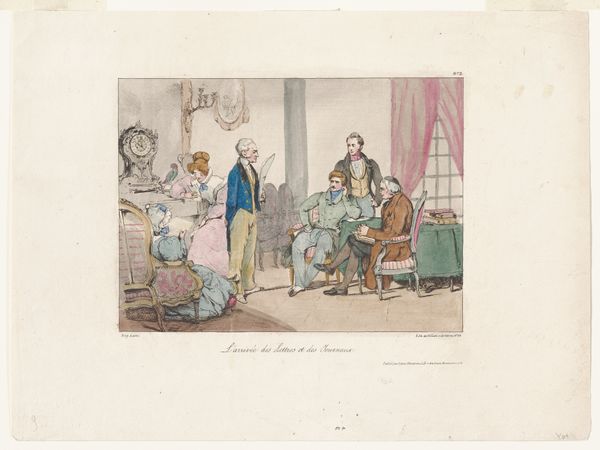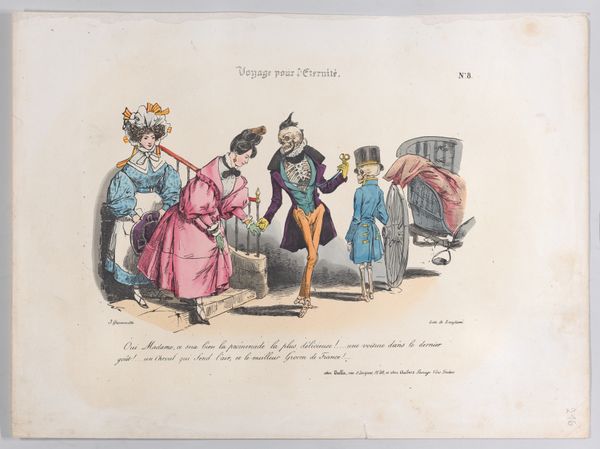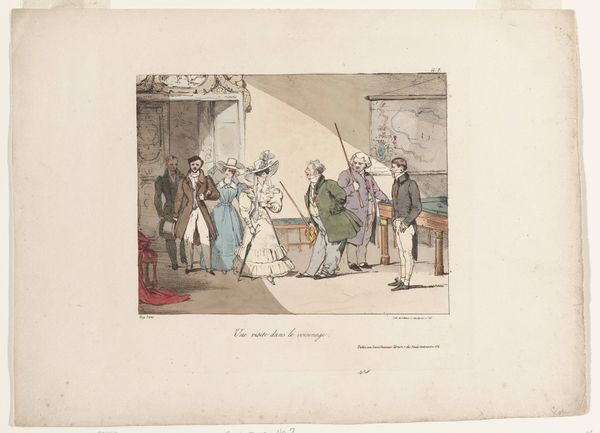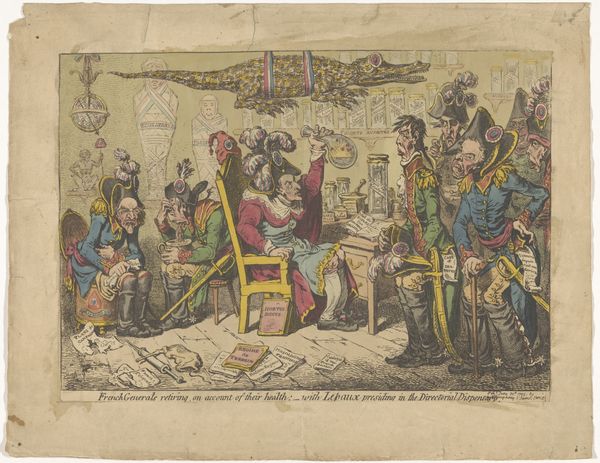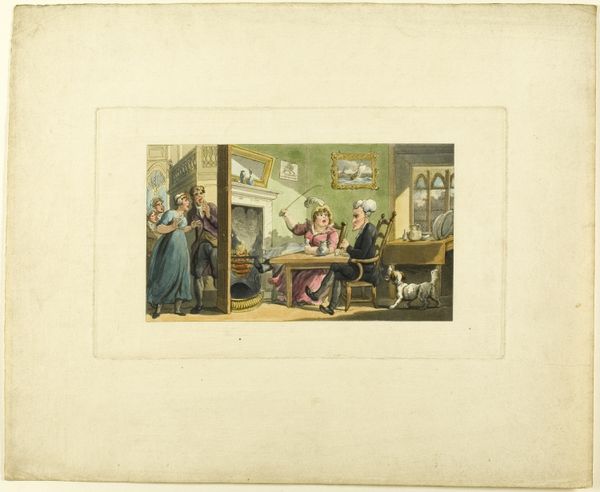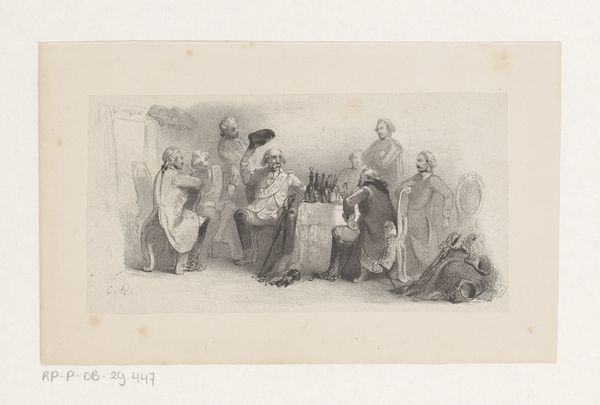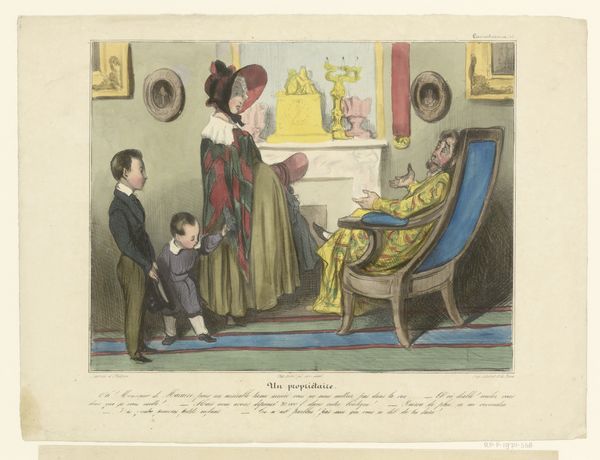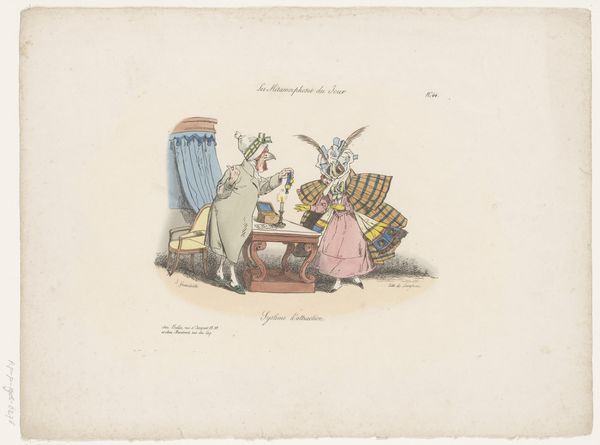
Groep mannen krijgt een maaltijd geserveerd door de Dood 1830
0:00
0:00
lithograph, print
#
allegory
#
lithograph
# print
#
caricature
#
romanticism
#
watercolour illustration
#
genre-painting
Dimensions: height 226 mm, width 281 mm
Copyright: Rijks Museum: Open Domain
Editor: This lithograph from 1830, titled "Groep mannen krijgt een maaltijd geserveerd door de Dood" or "Group of men being served a meal by Death," is by Jean Ignace Isidore Gérard Grandville. I’m struck by the contrast between the lively scene and the grim waiter. What compositional elements stand out to you? Curator: Primarily, I’m drawn to the spatial organization. Notice the rigid geometry of the table and chairs versus the more organic and fluid rendering of the figures. There's a distinct visual tension there. Also consider the artist’s choice to position Death on the periphery yet still illuminate him, thereby disrupting the balance of an otherwise conventional genre painting. It is intriguing, would you agree? Editor: I do! The way Death seems almost integrated into the background but also jarringly different is fascinating. Is the formal composition itself making an argument about life and death? Curator: Indeed. Look at how the rounded forms of the seated men echo the decorative motifs on the wallpaper, a visual rhyme that binds them to their surroundings, underscoring their worldliness, in opposition to the stark linearity defining Death. One must consider how form can become a powerful means for signifying meaning. Grandville asks us to evaluate the underlying construction of this tableau. Editor: So, even without knowing the context, the formal qualities of the work are speaking volumes. Curator: Precisely. By focusing on the construction of space, the juxtaposition of forms, and the chromatic choices, one can decipher an allegorical narrative embedded within the visual syntax itself. It transcends a mere pictorial representation. What new interpretations have you found while observing these attributes? Editor: I see now how the visual contrast truly highlights the transience and how we must use these tools to understand further into the composition. Thank you!
Comments
No comments
Be the first to comment and join the conversation on the ultimate creative platform.
